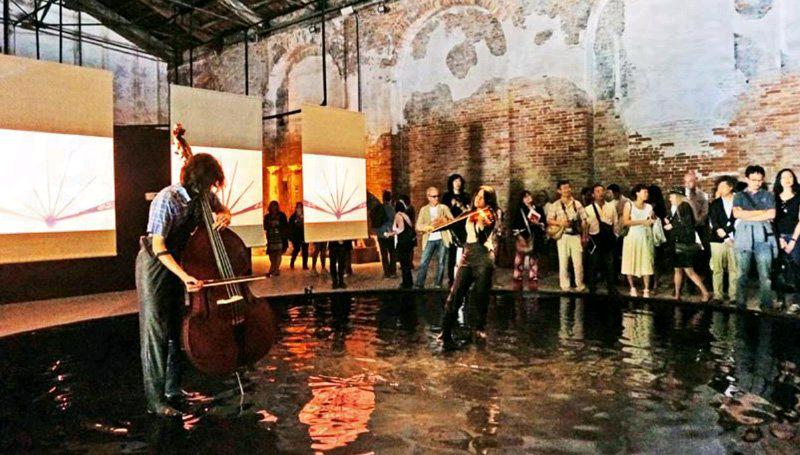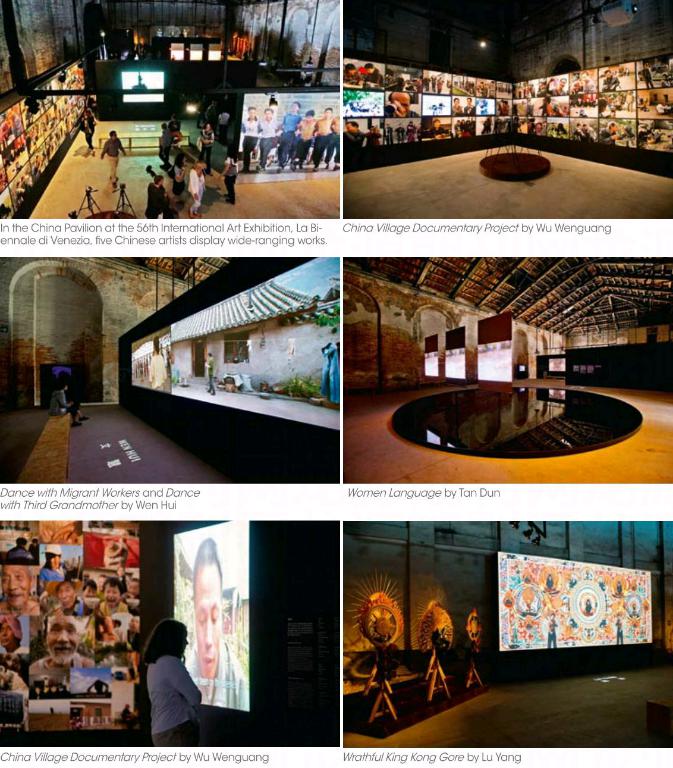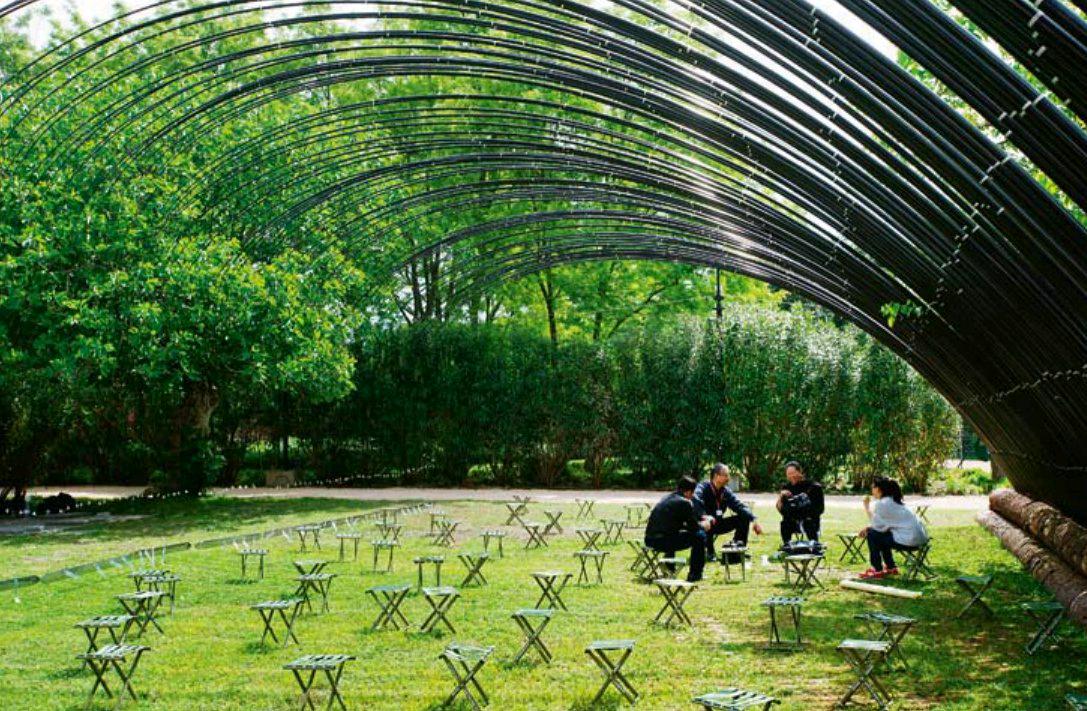Other Future
2015-06-16byYiMei
by+Yi+Mei
On May 7, 2015 in Venice, Living in Future, a live show featuring performance art, audio and video art by Tan Dun, heralded the opening of China Pavilion themed “Other Future” at the 56th International Art Exhibition La Biennale di Venezia. Dozens of violins and water show complemented works of Chinese artists Liu Jiakun, Lu Yan, Wen Hui, and Wu Wenguang, creating an artistic cornucopia with Chinese flavor.
In February 2015, “Other Future,” a theme proposed by the Beijing Contemporary Art Foundation (BCAF), was selected for the China Pavilion after several rounds of eliminations, chosen to echo “All the Worlds Future,” the theme of this years Venice Biennial.
“Other Future” stresses the concept of a “public sphere” beyond any limits of individuals, each of whom is independent and uncategorized, and whose value is not decided by a small, elite group. The“public sphere” also represents a spirit of civil society in China that is more open and accepting, but at the same time very challenging – it inspires desire for creativity that is natural, automatic, motivational, and outside the mainstream, showing great vitality even after social change.
“China Pavilion is expected to become a cultural and artistic communication platform,” says Cui Qiao, president of BCAF.“The opening exhibition met all our expectations. We also hope the exhibition can hint at how art can join social construction. This is the original intention of our foundation and what we want to explore. We be-lieve that only when the individual begins to act can we have a ‘future. ”
Five Chinese artists were invited to display their works at the exhibition. The kinetic art of Liu Jiakun investigates the relationship between human beings and nature and the environment, similar to the divinely humorous and provocative work by Lu Yang. A musical installation is the work of renowned conductor Tan Dun, presenting the collective memory of a disappearing language created and exclusively used by women who were otherwise forbidden formal education. The constant interaction between past and future is also the basis of a dance performance by the Living Dance Studio, which touches on the lives of migrant workers and their memories. Issues of urbanization and political reform in China are also at the center of a video project by Wu Wenguang, in which farmers both direct and appear in a documentary about village autonomy.

“I am proud that Chinese culture is arriving on the world stage,” says Ding Wei, vice minister of Chinas Ministry of Culture, sponsor of the exhibition. “At such an influential event, we hope the audience can feel the diversity of Chinese culture, both traditional and modern. It seems that China has become a focal point everywhere. We hope it maintains a positive, healthy and constructive image. China has good communication with Italy and other European countries in many aspects including cultural fields. This exhibition is a good example.”
Alongside the exhibition, the China Pavilion will also offer events like non-profit concerts and art salons to create an international cultural platform to promote mutual understanding. Presenting a wide variety of art, Chinese artists are inviting the audience to look, listen, feel and communicate with the creations in hopes of helping them better understand the real and vigorously progressing China as well as the challenges and opportunities it is facing.